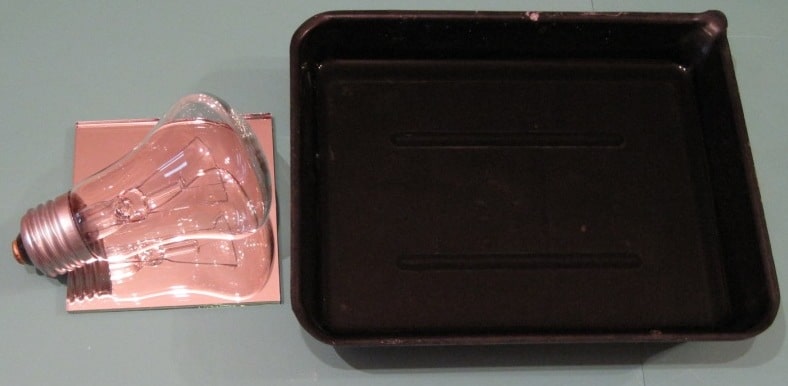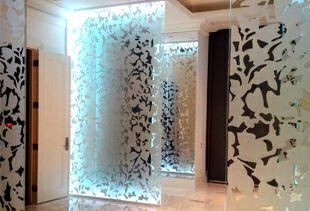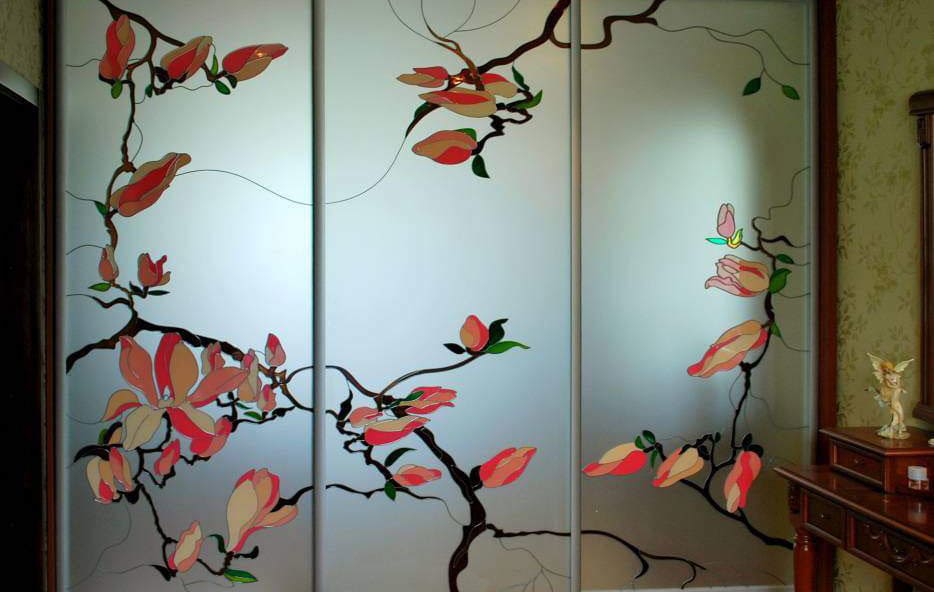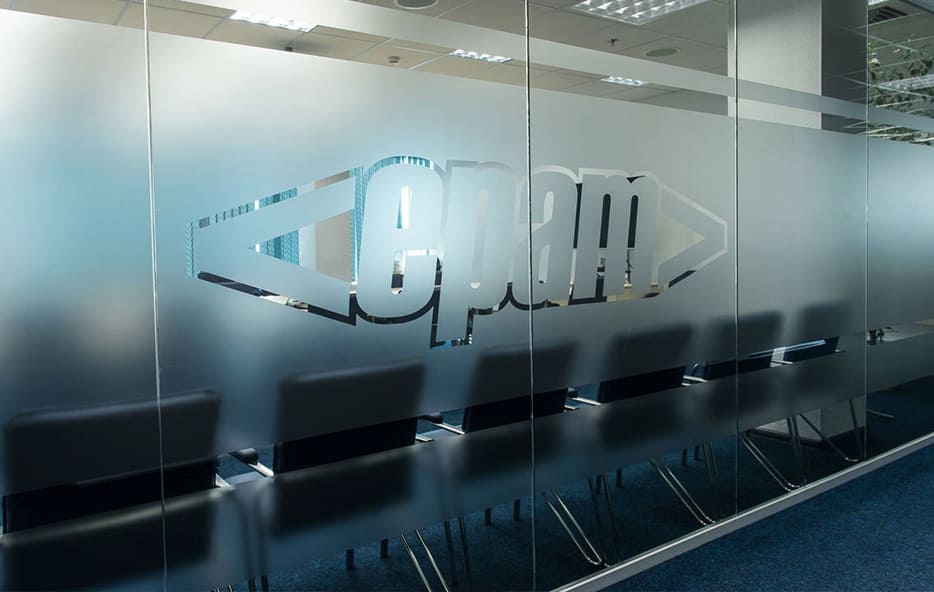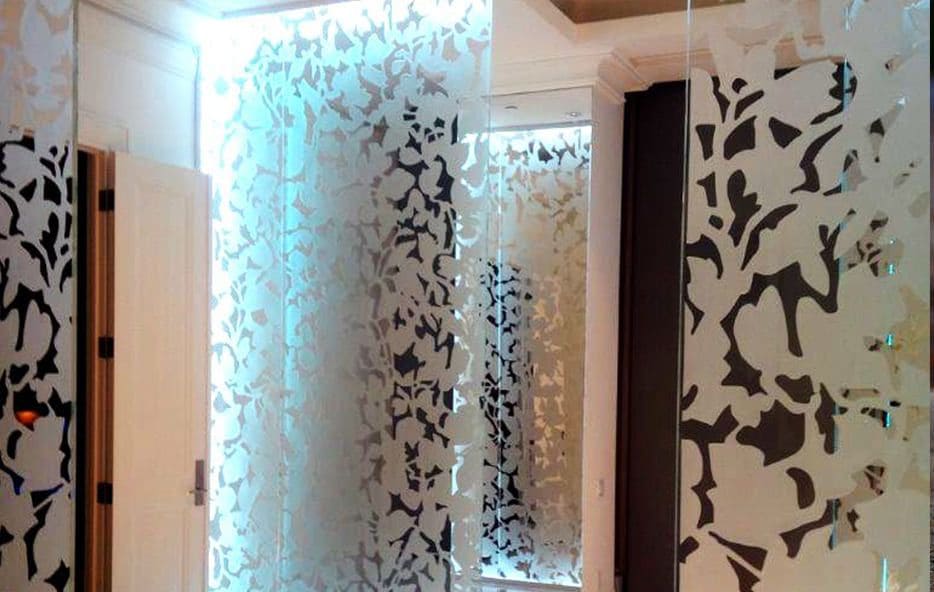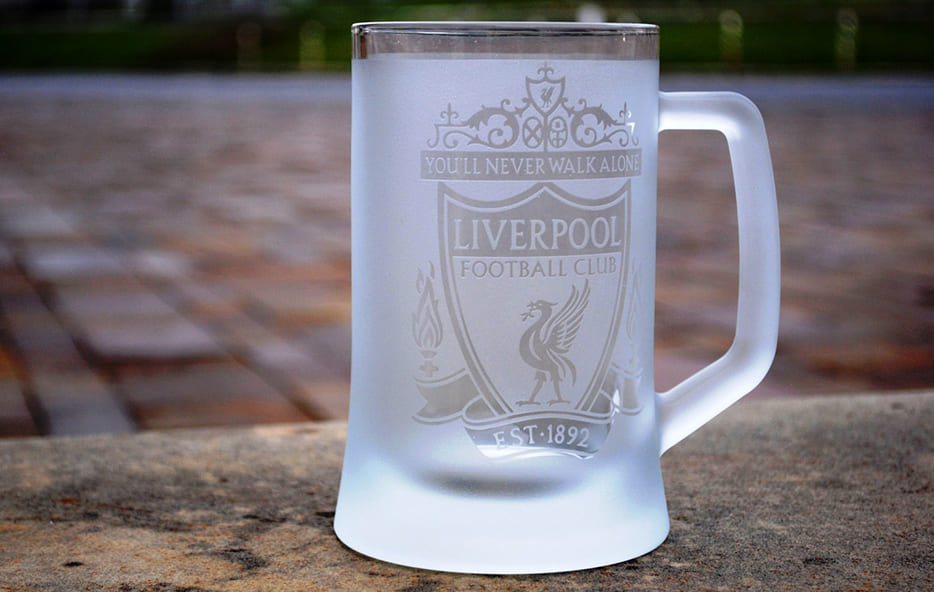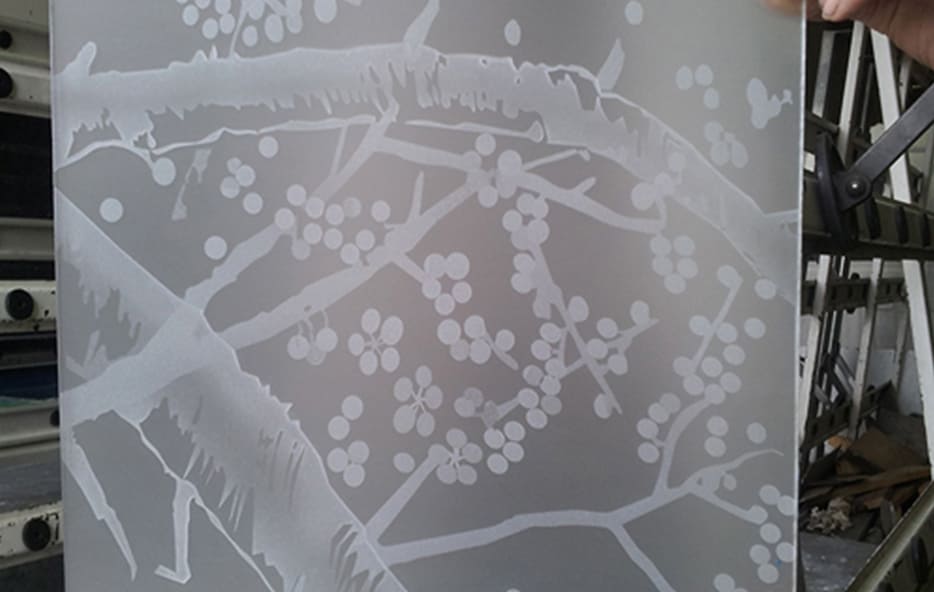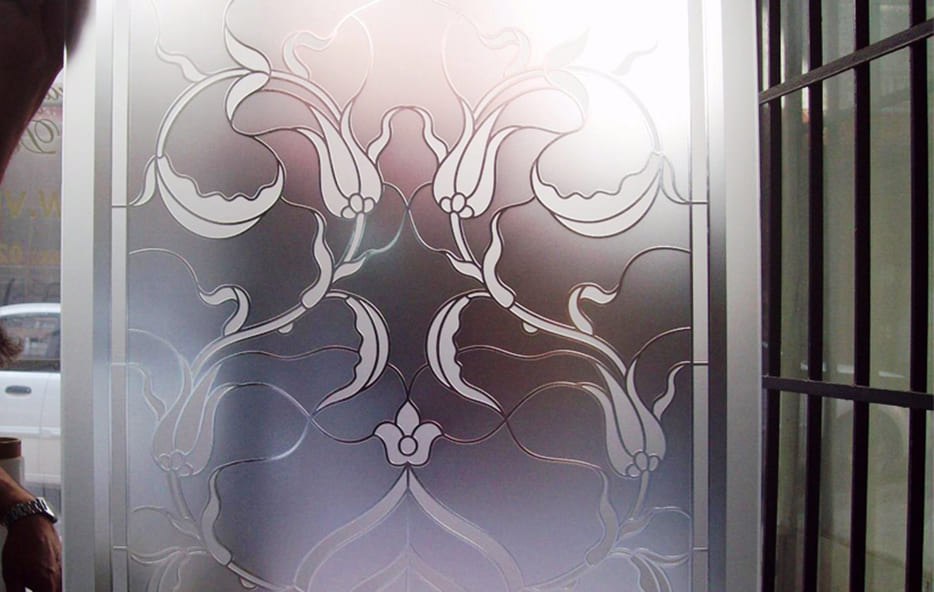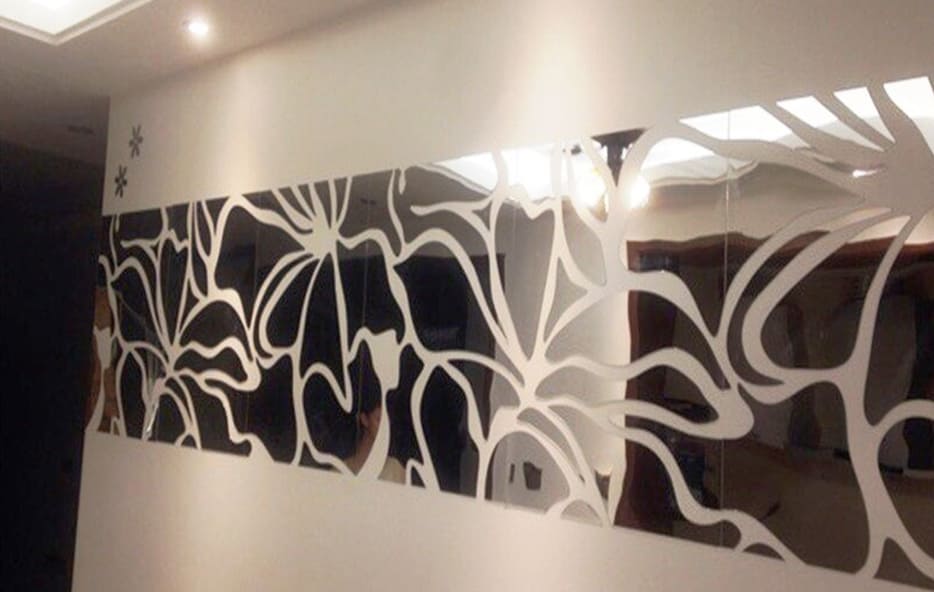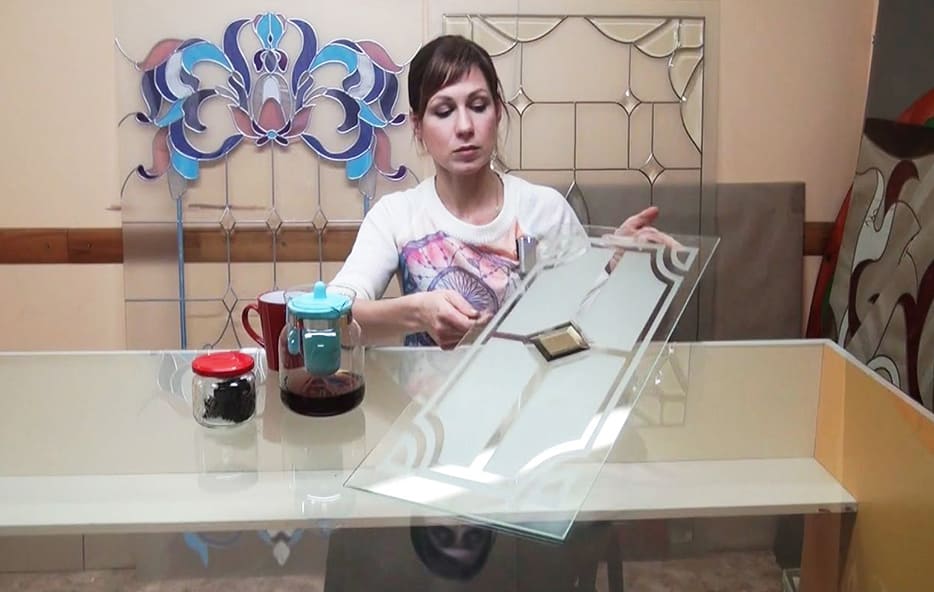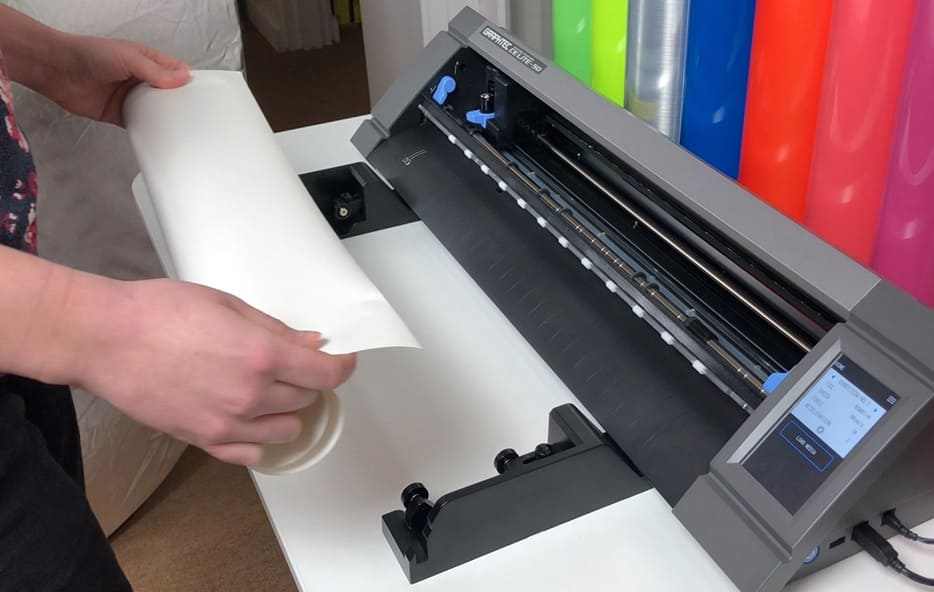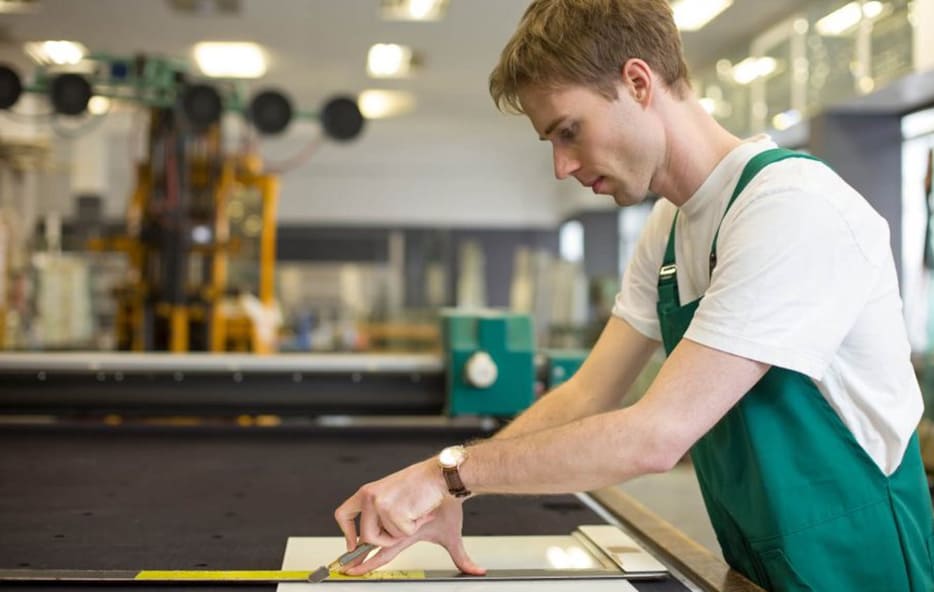Clear glass etching
When matting transparent glass products, it should be remembered that the quality of the matting directly depends on the quality of the glass itself. higher the quality of the glass, the higher the silicon content in it, and the better the final result. Do not try to frost old Chinese window glass, cheap bottles, or stemware. As a rule, they are made of glass of very dubious quality with a chemical composition unsuitable for matting.

If we compare the materials, we can say with confidence that the best material for chemical matting is a mirror. Despite the fact that the outer side of the mirror is always “lead”, precisely on the mirror itself the flaws from poor-quality matting compounds or stains due to a violation of the matting process are less visible.
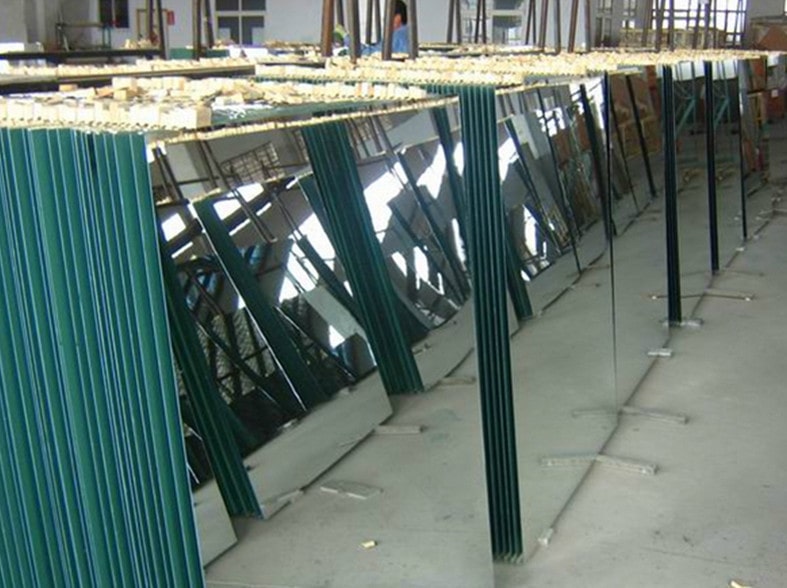
The second important aspect is for the thorough degreasing of the glass item to be frosted. Do not use solvents, as they leave a thin film on the glass surface that interferes with the flow of the chemical process. For degreasing use detergents for windows based on ammonia.
Now then, you need to frost (etch) one side of the clear glass. When matting with paste, everything is done as usual. First we paste the stencil, apply the paste on the glass, wash off the paste, remove the stencil, and finally, wash the glass with soap.
When matting in a solution you completely immerse the glass, so you need to seal the back of the glass with ORACAL film to protect it from matting.
Particular attention should be paid to the ends of the glass. They also need to be carefully sealed to avoid fluid leakage.
The way to protect the back of the glass is shown in the figure.
Now then, you need to frost (etch) one side of the clear glass. When matting with paste, everything is done as usual. First we paste the stencil, apply the paste on the glass, wash off the paste, remove the stencil, and finally, wash the glass with soap.
When matting in a solution you completely immerse the glass, so you need to seal the back of the glass with ORACAL film to protect it from matting.
Particular attention should be paid to the ends of the glass. They also need to be carefully sealed to avoid fluid leakage.
The way to protect the back of the glass is shown in the figure.
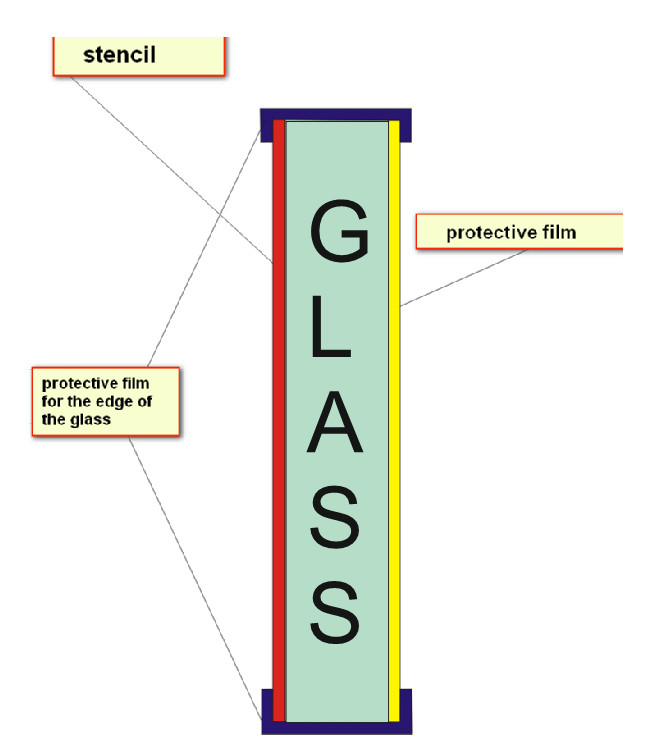
When preparing glass, follow the following procedure: After thoroughly degreasing the surface, the stencil first sticks together. All the edges are pressed tightly; wrinkles and air bubbles are removed. Then the back side of the glass is sealed, after which the glass is sealed from the ends with strips of the same film. Now leave the prepared glass with the stencil pasted for a day alone to achieve maximum adhesion.
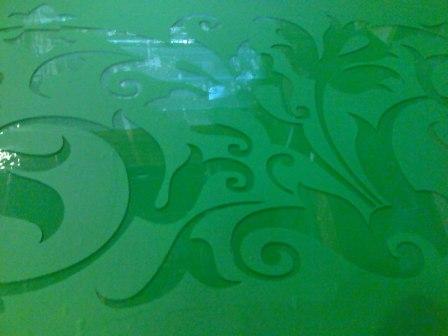
Pallet (bath) For frosting direct glass the presence of related equipment is required. The most important equipment is the capacity in which the glass will be etched. It can be any flat pallet with sides 5-15 cm high. Material - any polymer. Only metal and ceramics are not suitable. The bottom can be equipped with a drain hole, but this is not necessary for the convenience of draining IVSATIN liquid back into the tank.

Process. First, pour IVSATIN Matting Liquid into the bath. Keep track of the level. For immersed glass, the liquid level above the glass surface must be at least 1 cm. Then carefully immerse the glass in the solution with the matted side up. Leave on for 15-20 minutes. It is strongly not recommended to touch the matted surface during the process! There will be spots! After matting, the glass is removed from the tray and immediately washed with soap foam, as in all cases described above.
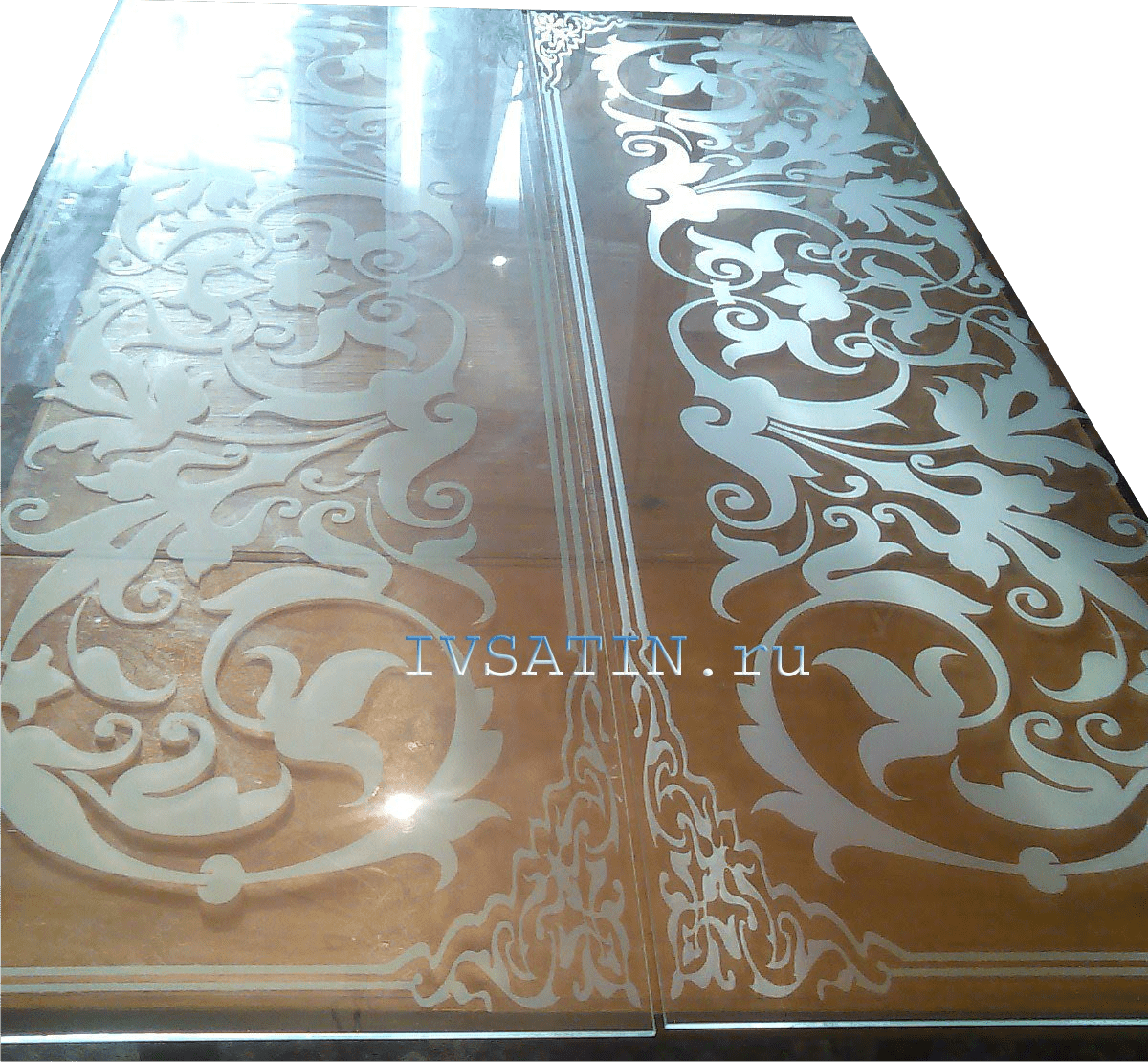
Precautionary measures. During the reaction, a small amount of ammonia is released, so glass etching should be carried out in a ventilated room or with exhaust ventilation. Work should be done with rubber gloves to prevent reagents from entering affected skin areas. Do not drink or eat food while working.
In addition to flat glass and mirrors, IVSATIN can also be used for matting volumetric glass objects. The photo below shows a piece of mirror and an ordinary light bulb in a bath with IVSATIN glass frosting liquid. And then we have our result after 10 minutes of frosting.
In addition to flat glass and mirrors, IVSATIN can also be used for matting volumetric glass objects. The photo below shows a piece of mirror and an ordinary light bulb in a bath with IVSATIN glass frosting liquid. And then we have our result after 10 minutes of frosting.
